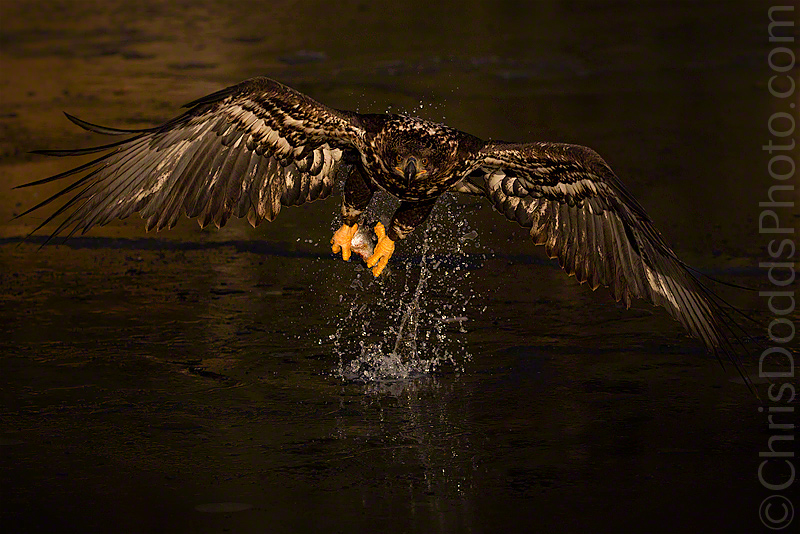
Here's a fun one from my recent Bald Eagle Workshop. I have some secret, and out of the way, spots where I head as fast as possible once it snows; the dark, flat water really makes the snowflakes pop. It's not a bad place to be when there is no snow and the light is nice too ;)
Freeze Frame
The image is made with Canon's new 100-400 f/4.5-5.6 IS II USM lens and my 1DX. Talk about a sweet and versatile lens! I keep finding myself going on about just how sharp and quick the lens is, that I forget to remind you all that techinique and practice both play a major roll in the final product. In keeping with my mantra; I used a shutter speed of 1/4,000 of a second to be sure to freeze every detail of the Eagle's wings, and any motion I may have made with the lens while following the Eagle's flight path. Like a windmill blade, slow movement of my lens results in a really fast movement at the distance where you are focused. Always ensure you have enough shutter speed to freeze movement and extract every ounce of detail from your images. A good start is 1/3,200 of a second and 1/4,000 or 1/5,000 is even better!
Kudos
I recently returned from Chris’s Eagle Workshop in Homer Alaska. Over the years, I have traveled extensively and can say without hesitating that this was the best trip I’ve ever been on. Chris is a very cordial but no nonsense guy. Everything about the trip was organized to the max. I’ve been photographing wildlife for 35 years and thought I had a pretty good idea about how to do it so I wasn’t expecting to learn a whole lot that was new. Wrong! Over the years, other “professionals” had encouraged me to shoot in aperture priority or auto ISO. When Chris told us he was going to teach us to set our camera exposures manually, I thought that sounded like a lot of unnecessary effort. That notion turned out to be false. If you attend this workshop and don’t already shoot in manual mode, your life will be changed. The exposures of the photos I took are spot on and better than any I have ever achieved.
In addition to the new material I learned, the “eagle shooting” was beyond anything one could ever imagine. It was both action packed and challenging. Our group was only five people and Chris bent over backward to make sure that each of us got the best photos of our lives. Even though I had substantial problems with my equipment, I now have more killer eagle photos than I could have ever hoped for. If you want an informative and fun packed trip, I encourage you to sign up for this or any of Chris’s workshops. I have signed up again for next year’s Eagle Workshop, in spite of my truck load of eagle photos, which I believe tells the whole story.
Ron Brown Colorado USA